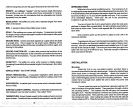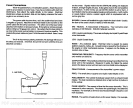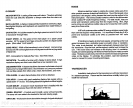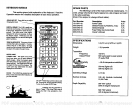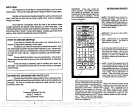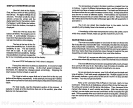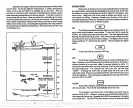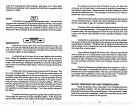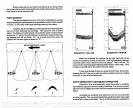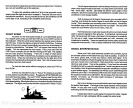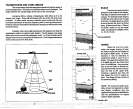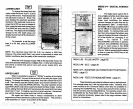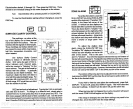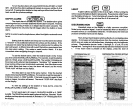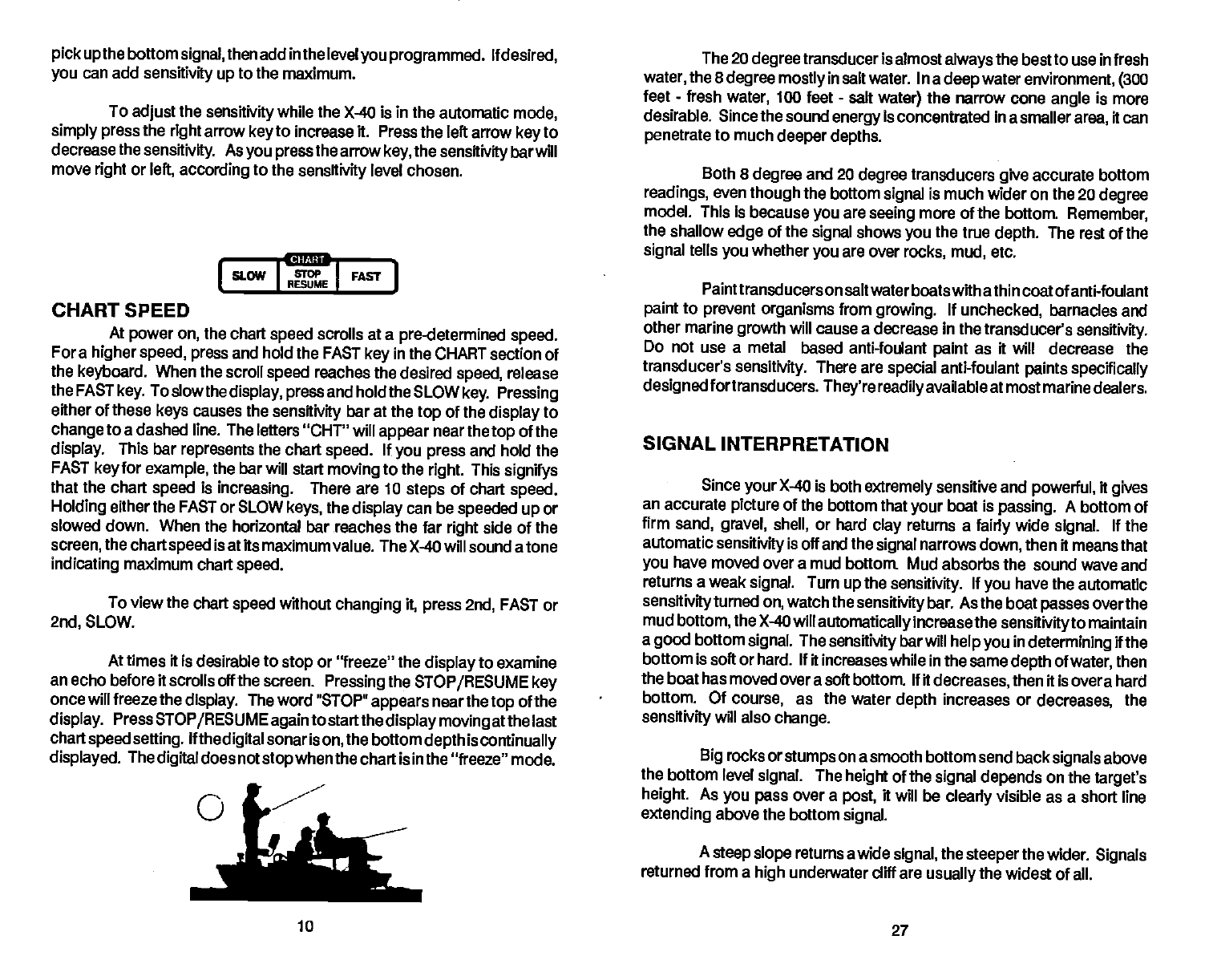
pick upthe
bottom
signal,
then add
in
the level
you programmed.
If
desired,
you
can add
sensitivity up
to the
maximum.
To
adjust
the
sensitivity
while the X-40 is in the automatic
mode,
simply press
the
right
arrow
key
to
increase it. Press the left arrow
key
to
decrease the
sensitivity.
As
you
press
the arrow
key,
the
sensitivity
barwill
move
right
or
left, according
to
the
sensitivity
level chosen.
CHART SPEED
51.0W FAST
RESUME
At
power on,
the chart
speed
scrolls at a
pre-determined speed.
For a
higher speed, press
and hold
the FAST
key
in the CHART
section of
the
keyboard.
When the scroll
speed
reaches the desired
speed,
release
the FAST
key.
To
slowthedisplay, press
and hold the
SLOWkey. Pressing
either of these
keys
causes the
sensitivity
bar at the
top
of
the
display
to
change
to a dashed line.
The letters "CHT" will
appear
near the
top
of the
display.
This
bar
represents
the chart
speed.
If
you press
and
hold the
FAST
key
for
example,
the bar will start
moving
to the
right.
This
signifys
that the chart
speed
is
increasing.
There are 10
steps
of
chart
speed.
Holding
either the FAST or
SLOW
keys,
the
display
can be
speeded up
or
slowed down. When
the horizontal bar reaches the far
right
side of the
screen,
the chart
speed
is
at its maximum value. The X-40 will sound a tone
indicating
maximum chart
speed.
To view
the chart
speed
without
changing
it,
press 2nd,
FAST or
2nd,
SLOW.
At
times
it
is desirable to
stop
or "freeze" the
display
to examine
an echo before it
scrolls off the screen.
Pressing
the
STOP/RESUME key
once will
freeze the
display.
The word "STOP"
appears
near the
top
of the
display.
Press
STOP/RESUME againtostartthe
displaymoving
atthe last
chart
speedsetting. lfthedigital
sonar
ison,
the bottom
depthis continually
displayed.
Thedigital
does not
stopwhenthe
chart isinthe "freeze" mode.
The 20
degree
transducer is
almost
always
the best to use in fresh
water,
the 8
degree mostly
in salt
water.
In
a
deep
water
environment,
(300
feet
-
fresh
water,
100
feet
-
salt
water)
the narrow cone
angle
is more
desirable. Since the sound
energy
Is
concentrated In a smaller
area,
it can
penetrate
to much
deeper depths.
Both 8
degree
and 20
degree
transducers
give
accurate bottom
readings,
even
though
the bottom
signal
is
much wider on the 20
degree
model.
This is because
you
are
seeing
more of the
bottom.
Remember,
the
shallow
edge
of the
signal
shows
you
the true
depth.
The rest of the
signal
tells
you
whether
you
are over
rocks, mud,
etc.
Paint transducers on
saltwater boatswith a thin coat of anti-foulant
paint
to
prevent organisms
from
growing.
If
unchecked,
barnacles and
other marine
growth
will cause a
decrease
in
the transducer's
sensitivity.
Do not use a metal based
anti-foulant
paint
as it will decrease the
transducer's
sensitivity.
There are
special
anti-foulant
paints specifically
designedfortransducers. They're
readilyavailableat
most marinedealers.
SIGNAL INTERPRETATION
Since
your
X-40 is both
extremely
sensitive and
powerful,
it
gives
an accurate
picture
of the
bottom that
your
boat is
passing.
A bottom of
firm
sand,
gravel, shell,
or
hard
clay
returns a
fairly
wide
signal.
If the
automatic
sensitivity
is off and the
signal
narrows
down,
then it
means that
you
have moved over
a mud bottom. Mud absorbs the sound
wave and
returns a weak
signal.
Turn
up
the
sensitivity.
If
you
have
the automatic
sensitivityturned on,
watch the
sensitivity
bar. As
the boat
passes
overthe
mud
bottom,
the
X-40 will
automatically
increase the
sensitivityto
maintain
a
good
bottom
signal.
The
sensitivity
bar will
help you
in
determining
if the
bottom is soft or
hard. If it increases while in
the same
depth
of
water,
then
the boat has
moved over a soft bottom. If it
decreases,
then 'it is over a hard
bottom.
Of
course,
as the water
depth
increases or
decreases,
the
sensitivity
will
also
change.
Big
rooks or
stumps
on a smooth bottom
send back
signals
above
the bottom
level
signal.
The
height
of the
signal depends
on the
target's
height.
As
you pass
over a
post,
it will
be
clearly
visible as a short line
extending
above the bottom
signal.
A
steep slope
returns a
wide
signal,
the
steeper
the wider.
Signals
returned
from a
high
underwater cliff are
usually
the widest of all.
10
27
PDF compression, OCR, web-optimization with CVISION's PdfCompressor



